This time I’d like to revive a tradition that somehow got lost on this Blog over two years ago (well, they’ve been two quite troubled years, so maybe that explains it). What I mean is the “themed posts” we used to have on here quite regularly between mid-2020 and until early 2022. These themes added an often unexpected and occasionally even light-hearted angle to the topic of dark tourism. Long-time readers of this Blog may remember them. Examples included “Dark Tourism & Reflections”, “Dark Tourism & Clothing”, “Dark Tourism & Electricity” or “Dark Tourism & Pianos”.
Today I’ll pick up that tradition again and give you a similar post – now one that is all about doors. And as before this will mostly be a photo essay.
How can doors be dark? Well, the first thing I would think of are cell doors in prisons. One set of those featured only recently in the Blog post about Krakow, namely these preserved cell doors at the Pomorska Street Memorial:

The Occupations Museum in Tallinn, Estonia, features a whole collection of prison-cell doors dislocated (originally from various different prisons) and clustered together to form a wall of doors:
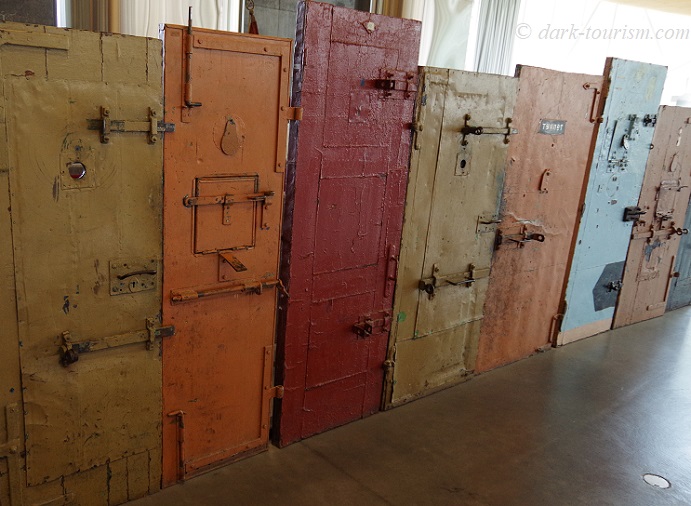
Yet more prison-cell doors featured in a recent Blog post five weeks ago, namely in this photo taken at the Wilmina Hotel in Berlin that was converted from a women’s prison, and a good proportion of the original cell doors were kept in place:
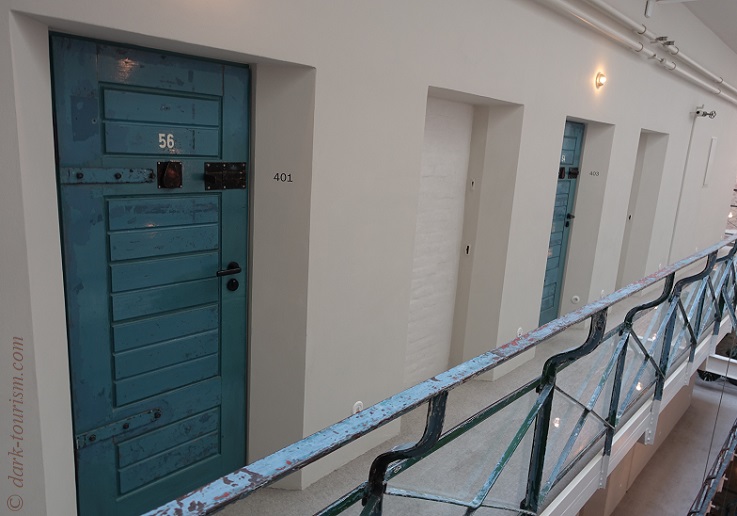
And here’s a door from Auschwitz, namely the main door of Block 19. It is ironically labelled “Schonungsblock”, which roughly translates as ‘convalescence/resting block’:
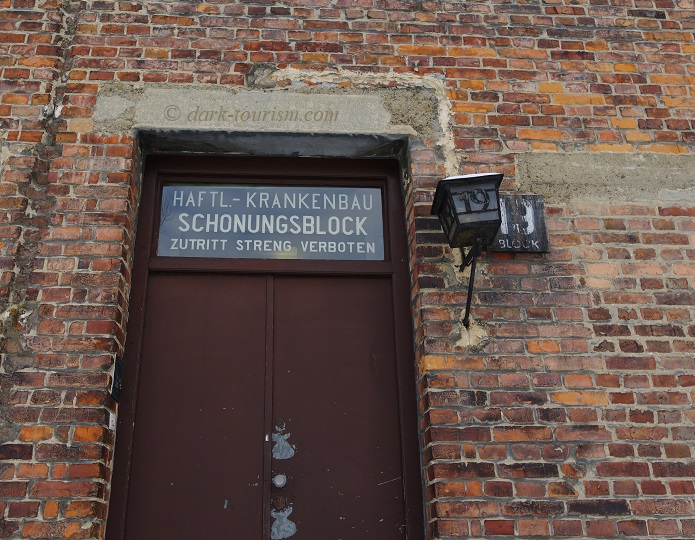
So it was supposedly a section of the camp inmates’ infirmary, but of course “Schonung” was merely a cynical euphemism (just like “Arbeit macht frei”) and in reality inmates who were so ill and weak that they ended up in this block hardly ever came out again but were simply left to die.
Leaving behind prisons and concentration camps, another type of door with a dark connection could be blast doors of nuclear bunkers, such as this one at the former West German government bunker Marienthal, near the former capital Bonn:
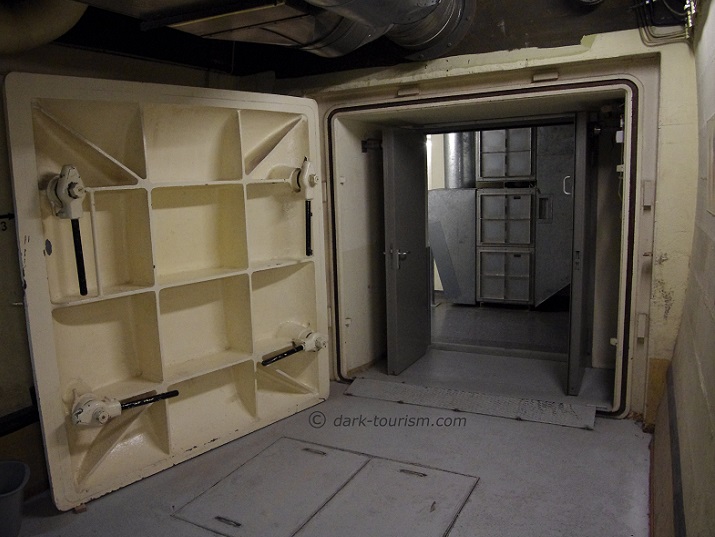
In Bonn itself, the Haus der Geschichte (House of History) features a door that was the victim of a blast, namely the damaged door from a Bundeswehr (German military) armoured personnel carrier (APC) that was ambushed during a mission in Afghanistan in the 2000s:
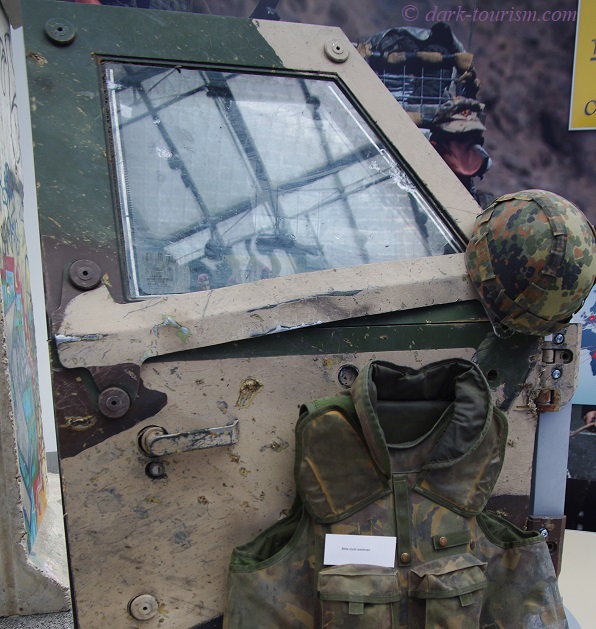
Back to bunkers – here’s a set of doors in the decontamination section of the bunker underneath the Ministry of the Interior in Albania’s capital Tirana, which is now a museum with the name “BunkArt 2”:
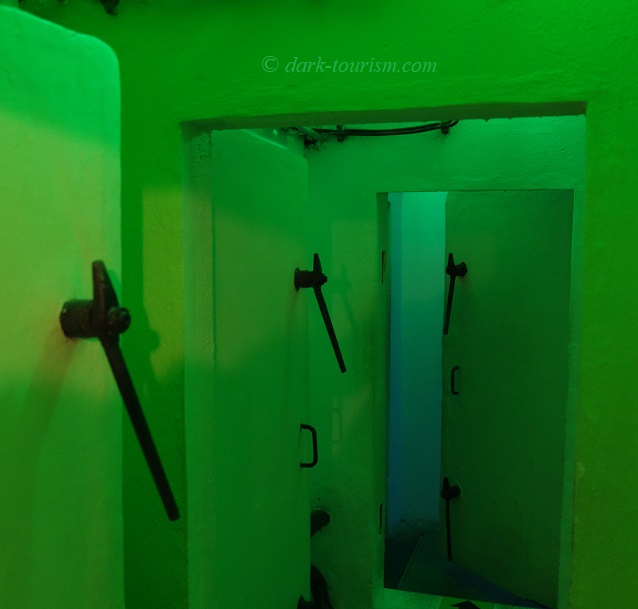
And at “Bunk’Art 1”, at the former government nuclear bunker (where dictator Enver Hoxha and his inner circle would have sheltered had there been a war), I spotted this door featuring the communist red star:
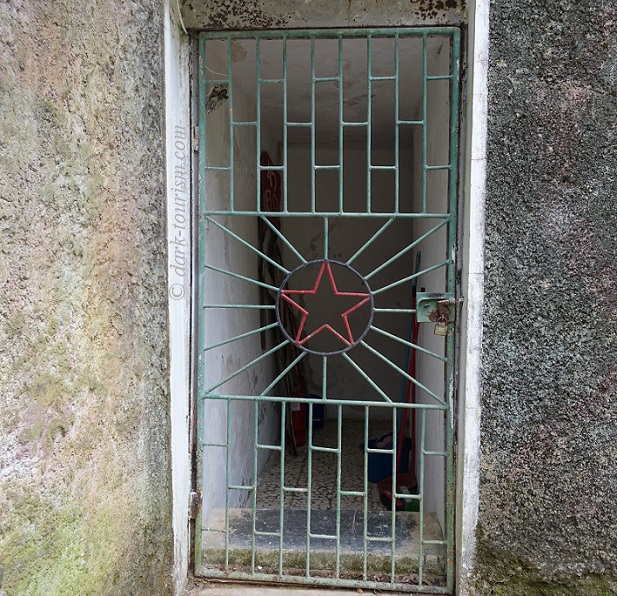
Another communist red star I found in front of this closed door of a building in the Chernobyl exclusion zone:
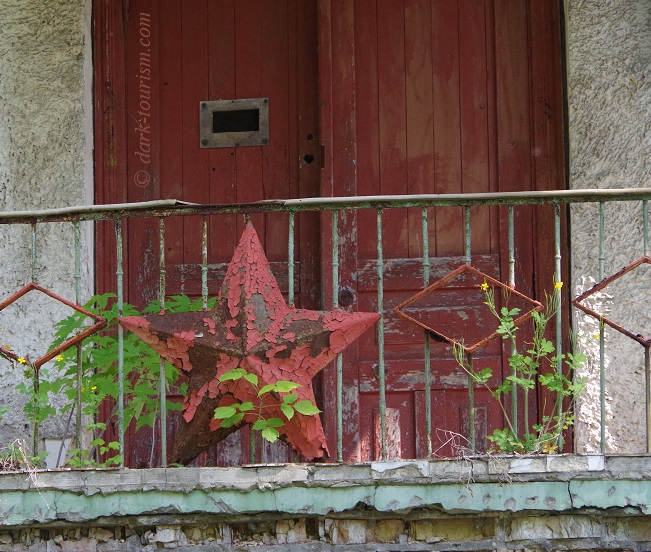
Pripyat, the former planned town for the employees of the Chernobyl NPP, is sometimes referred to as the “mother of” all ghost towns, and I would concur – although another contender for that title could be the fabled Kolmanskop in Namibia. In many of the semi-sand-filled rooms of this ghost town’s buildings there were also doors, rendered useless by indoor dunes:
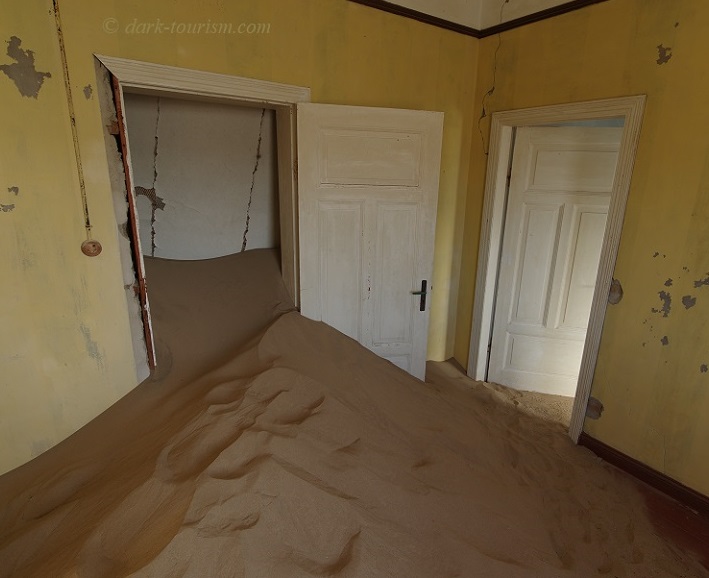
Yet another famous ghost town is Varosha in Northern Cyprus. And parts of this once totally off-limits ghost town were opened up for visitors by the Turkish authorities only recently. I went there in January 2023 and amongst other things found these closed doors:
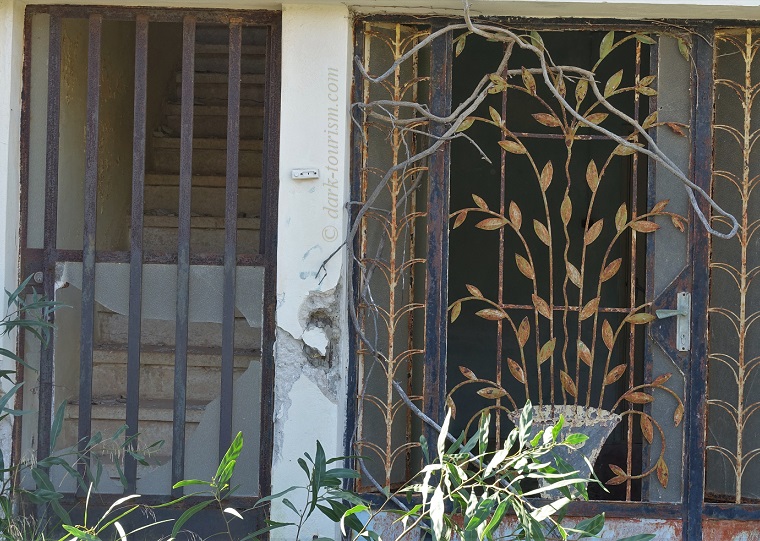
In the Greek part of Cyprus, more precisely in the capital Nicosia, a particular door caused me grief, as I found it locked, even though the sign still said “open” (and according to the published opening times it should have been open, but wasn’t). It’s at an office from where I would have hired a car for an excursion to Polemi, which I therefore couldn’t do:
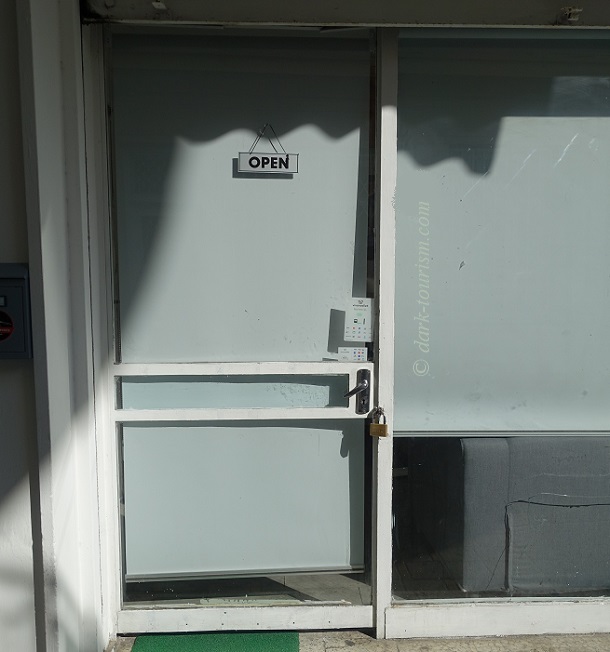
Another useless door I spotted in yet another ghost town, namely in Chacabuco in Chile, on the roof of the restored theatre building (… though I’m not entirely sure whether this really is a door).
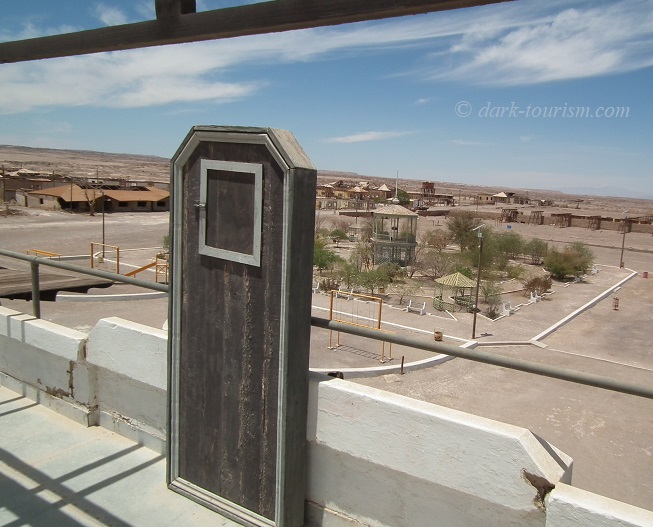
Also rendered useless was the wooden door in the next photo, which was partially charred in the firestorm created by the deadliest ever conventional aerial bombing raid in history, namely the attack by the US Air Force on Tokyo on 10 March 1945. The door is now an exhibit at the Center of the Tokyo Raids and War Damage, one of the lesser known dark sites in Japan’s capital city.
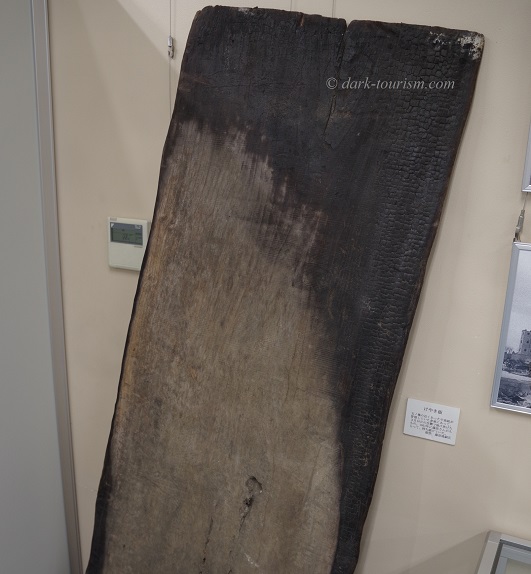
Coming back to Europe, here’s a door that bore witness to another conflict, namely “The Troubles” in Northern Ireland. As pubs were frequently “soft targets” for bombing attacks on both sides of the Republican-Loyalist divide, pub entrances were often protected by cage-like structures as seen in this photo taken in Belfast last year (most of these cages have been dismantled, but this particular pub keeps its specimen as a remarkable relic):
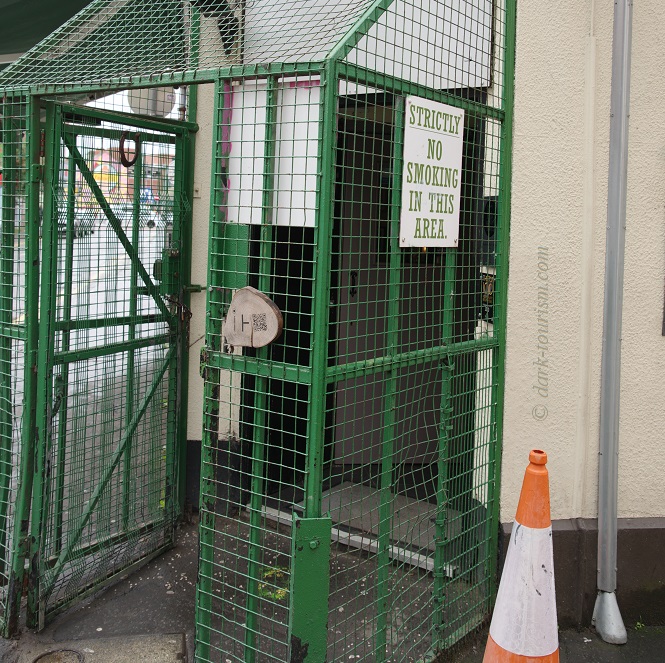
Not quite so dark is this photo of the door to Duwisib Castle in the Kalahari Desert in Namibia – unfortunately it was locked at the time I was there so I couldn’t see the castle’s interior (same photo as the featured one at the top of this post):

The castle is a bizarre folly, built in 1909 for Hansheinrich von Wolf, a former officer of the Schutzstaffel (the German colonial military of the time, responsible for the genocide against the Herero and Nama people). He couldn’t enjoy his abode for long though. The outbreak of WW1 meant he and his wife had to leave … and he was killed in battle of the Somme in 1916.
Finally here’s an open door, spotted in India’s capital Delhi:
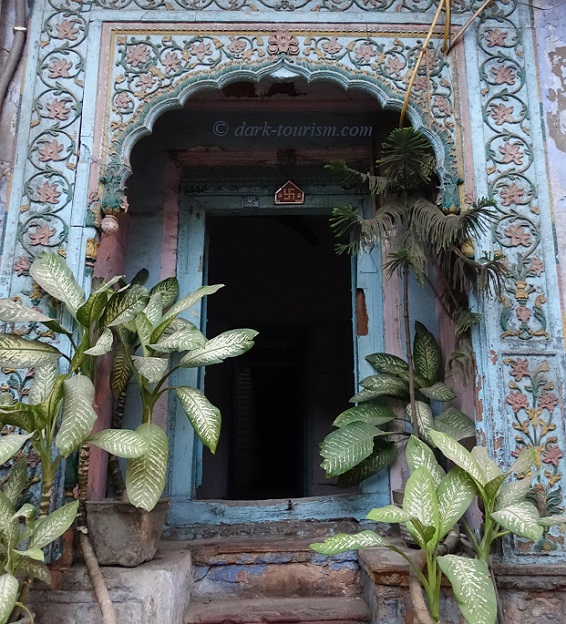
Admittedly, there’s nothing genuinely dark about this, but spot the little swastika above the door! Yet in India the swastika does not stand for Nazis but is quite a harmless symbol (like it is in mainly Buddhist Taiwan – see the final photo in the earlier Blog post about that country).
But so much for DT & doors.
I hope you have enjoyed this revival of the themed post format. When there were more such posts they were usually decided upon in polls, when out of a suggested list of four themes readers could vote for their preferred one to feature in the next post. That’s something I’d also like to bring back here. So here’s a new such poll:
a) DT & Beaches
b) DT & Bent Steel
c) DT & Bullet Holes
d) DT & Barbed Wire
Vote by putting your choice in the comment section below, or, if you are a subscriber to the DT Newsletter (you can sign up in the top right corner at the top of this page) you can also vote by replying to the next Newsletter.
(The first in the above list, by the way, may be the most surprising one, given that beach holidays are pretty much the exact opposite of dark tourism – but there are in fact quite a good number of beaches with dark associations …)
—————–
UPDATE: this poll is now closed – the winning theme, DT & beaches, has been uploaded
————–




24 responses
DT Beaches! 🏖️
noted
DT Bullet Holes
noted
DT & Beaches (more ‘cos of the sea than the sand!)
noted
Beaches – you got me curious now
noted!
Has to be beaches
noted!
DT and Beaches
noted
Going for beaches too!
noted!
Love the theme.
Beaches for me too, though, also want the others haha!
noted! – and the other themes will be fielded again in future polls
Beaches please Peter – intriguing!
noted!
It’s gotta be beaches!
noted!
beaches please Peter, an intriguing subject!
noted!
DT & Beaches
noted!